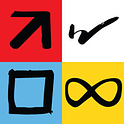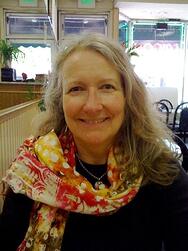Article by Dr. Mark Seton, a consultant in Higher Education Performing and Media Arts and a Certified FEBI facilitator, Sydney, AUSTRALIA.
In July this year I was privileged to be invited to give a keynote paper entitled Resilient Vulnerability at the 4th National Puppetry and Animatronics Summit in Melbourne, Australia. Over the past few years I have been using training practices associated with FEBI to enable performing arts practitioners to identify their own energetic preferences so that they can have a more sustainable working practice.
What was interesting as I prepared to speak to the puppeteers was to learn that they have a very real recognition of the primacy of energy in their practice. In Penny Francis’ Reader in Puppetry Theatre Practice (2012), she observes that “the perceived investment of the inanimate with anima or spirit is effected through the convincing transference of a performer’s energy - endowing the puppet/object with motion (normally), voice (sometimes) and presence (always).” I drew upon this insight as a foundation for engaging puppeteers with the consideration that they need to have a more ecological approach to how they draw upon and channel appropriate energies to be both fully present in the performance space and give their energy to animate the puppets or objects they manipulate. In particular, I encouraged them to think about approaching the creation of ‘character’ as energetic shape or form, rather than via psychological motivation. This would not only allow them to consider how to manage their use of energy like a marathon runner, but it would also allow them a means by which to alter their embodied engagement in character in a way that they could debrief and ‘shake off’ aspects of the performance afterwards.
 This work on resilient vulnerability has emerged from my years of research into actor training in which actors are valued for their vulnerability – their capacity to affect and be affected by an ‘other’, whether it is a text, a person, or a situation. Performance training is often very effective at enabling artists to be vulnerable. But there is little training in how to manage that vulnerability so that it is resilient and sustainable for a career that is full of ups and downs, rejections and uncertainties. I make use of FEBI as a foundational awareness tool when helping actors build up their resilience. I encourage actors to identify their own energetic preferences and tendencies, and then physically ‘play with’ how they might use their preferences to build up the other qualities of energy they might require for a particular character or performance task.
This work on resilient vulnerability has emerged from my years of research into actor training in which actors are valued for their vulnerability – their capacity to affect and be affected by an ‘other’, whether it is a text, a person, or a situation. Performance training is often very effective at enabling artists to be vulnerable. But there is little training in how to manage that vulnerability so that it is resilient and sustainable for a career that is full of ups and downs, rejections and uncertainties. I make use of FEBI as a foundational awareness tool when helping actors build up their resilience. I encourage actors to identify their own energetic preferences and tendencies, and then physically ‘play with’ how they might use their preferences to build up the other qualities of energy they might require for a particular character or performance task.
Often I discover that actors have been traumatised by past vulnerabilities that were not appropriately negotiated through an embodied process. Dr Peter Levine, a pioneer in somatic (embodied) treatment of trauma, has noted, firstly, that the perception and manifestation of trauma and stress are particular to each individual. Secondly, the resilience of a person, in the face of inevitable vulnerability to stress and/or trauma, is a consequence of both personal history and a supportive network of relationships. And, thirdly, and most crucially, that any trauma triggered is “‘locked’ in the body, and it’s through the body that it must be accessed and processed (Levine 1997). By using FEBI, alongside another somatic creative and improvisational practice known as InterPlay (which shares the same lineage with FEBI with regard to the work of Betsy Wetzig), I find that I am helping performers, including actors and puppeteers, find their own unique embodied pathways to wellbeing and becoming empowered to be resiliently vulnerable in their creative practice.
To use FEBI with your clients, register for the upcoming FEBI Certification.
Still don't know about FEBI? Join us Monday, September 10th for a free webinar, Energize Yourself, Energize Your Business with FEBI




 ty in other workplaces and are willing to make that kind of investment, we can achieve the efficiency, elegance, creativity and sustainability in performance.
ty in other workplaces and are willing to make that kind of investment, we can achieve the efficiency, elegance, creativity and sustainability in performance.


